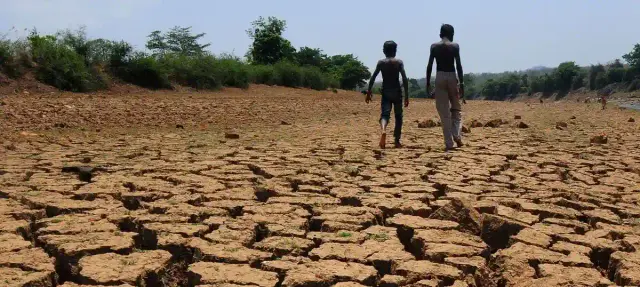Zimbabwe Experiencing Negative Effects Of El Niño
Rural households in Zimbabwe are starting to experience the negative effects of El Niño which is expected to drive high needs across Southern Africa through early 2025.
El Niño is a natural climate pattern that can bring increased heat and drought to some areas while causing heavy rains in others.
Unfortunately, it appears that the weather has not been kind to people living in rural areas, making their lives very difficult.
Many farmers in Zimbabwe rely on the October rains to plant their crops, but the current situation is so severe that even those who work in the fields are not optimistic.
This phenomenon, which is not new to Zimbabwe and the region, often leads to delayed and unpredictable rainfall, negatively affecting crops and livestock.
Rudo Mtetwa, a 32-year-old farmer from Chipinge, told NewsDay that it has become challenging to produce anything on their farms due to the effects of climate change. As a result, they are forced to seek work in nearby irrigation farms just to survive, earning only $2 per day. Mtetwa added:
I am no longer able to send my children to school due to lack of funds and I feel that if I get a piece of land in the irrigation scheme, I will be able to take care of my family’s needs. I want to plant tomatoes and other crops but I can’t do that in my own field as a result of El Niño.
Talent Mutamakira, who is also from the same area, is urging the government to provide support to women in remote areas to lessen the effects of El Niño.
She is asking for financial assistance to start income-generating projects like poultry farming. Mutamakira is appealing to the government to allocate land to women specifically for irrigation schemes, allowing them to grow horticultural products and earn a livelihood.
According to the 2023 Zimbabwe Vulnerability Assessment Committee’s assessments, a significant number of people in both urban and rural areas will face food insecurity in the coming years. On November 8, 2018, the Famine Early Warning Systems Network (FEWS Nett) predicted that a strong El Nino would drive high needs across Southern Africa through early 2025.
Zimbabwe is already grappling with the consequences of climate change, such as erratic rainfall patterns, floods, and prolonged droughts.
The upcoming El Niño event in 2023-2024 is expected to worsen the situation, leading to aridity and impacting food and animal production.
The southern parts of Zimbabwe will be particularly affected. In a post on X seen by Pindula News, Bulawayo Mayor David Colatart said the city will also be affected. He said:
Below average rains are being forecasted for the southern part of Zimbabwe this year including Bulawayo. Our dams are already low so we must prepare for further water shortages. I appeal to all residents to do whatever they can to conserve water in the City.
Please would owners of boreholes also be conservative in water usage. The water table is dropping and we must be responsible.
Try not to water during the heat of the day – rather water in the early evening or at night so that evaporation is reduced.
These challenges pose a risk to the progress made in reducing malnutrition, especially among children. Zimbabwe has experienced droughts in the past, leading to food deficits and stagnation in rural livelihoods. The COVID-19 pandemic has further complicated the situation.
The government aims to mitigate the impact of El Niño through irrigation development and dam construction. The World Food Programme and other organizations are working to strengthen climate-smart agricultural practices and access to water.
However, there are concerns about resource misdirection and politicization of food during the El Niño period.
For feedback and comments, please contact ZiMetro News on WhatsApp: +27 82 836 5828.

For comments, Feedback and Opinions do get in touch with our editor on WhatsApp: +44 7949 297606.


